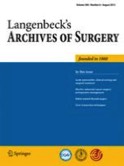Ex vivo machine perfusion: current applications and future directions in liver transplantation

Liver transplantation is the only curative treatment option for end-stage liver disease, however, its use remains limited due to a shortage of suitable organs. In recent years, ex vivo liver machine perfusion has been introduced to liver transplantation, as a means to expand the donor organ pool.
To present a narrative review of prospective clinical studies on ex vivo liver machine perfusion, in order to assess current applications and highlight future directions.
Methods: A systematic literature search of both PubMed and ISI web of science databases as well as the ClinicalTrials.gov registry was performed.
Twenty articles on prospective clinical trials on ex vivo liver machine perfusion were identified. Out of these, eight reported on hypothermic, nine on normothermic, and two on sequential perfusion. These trials have demonstrated the safety and feasibility of ex vivo liver machine perfusion in both standard and expanded criteria donors. Currently, there are 12 studies enrolled in the clinicaltrials.gov registrar, and these focus on use of ex vivo perfusion in extended criteria donors as well as declined organs.
Ex vivo liver machine perfusion seems to be a suitable strategy to expand the donor pool for liver transplantation and holds promise as a platform for reconditioning diseased organs.
Authors are Julian Michelotto, Joseph MGV Gaßner, Simon Moosburner, Vanessa Muth, Madhukar S Patel, Markus Selzner, Johann Pratschke, Igor M. Sauer, and Nathanael Raschzok.

